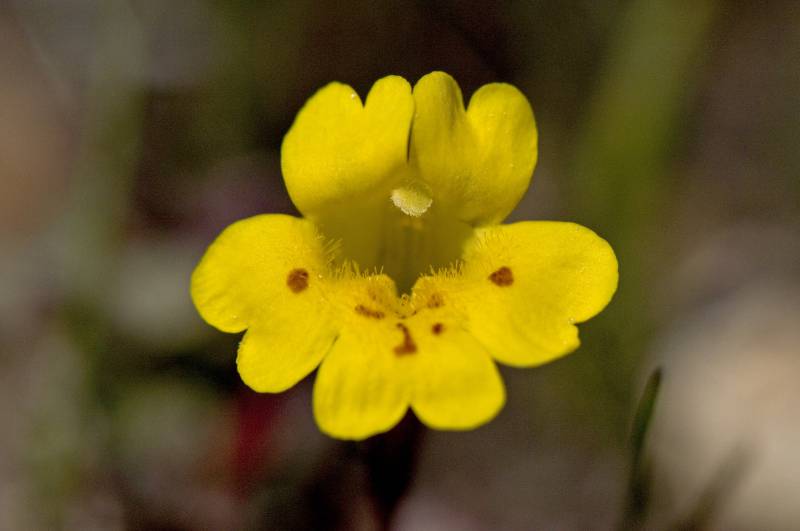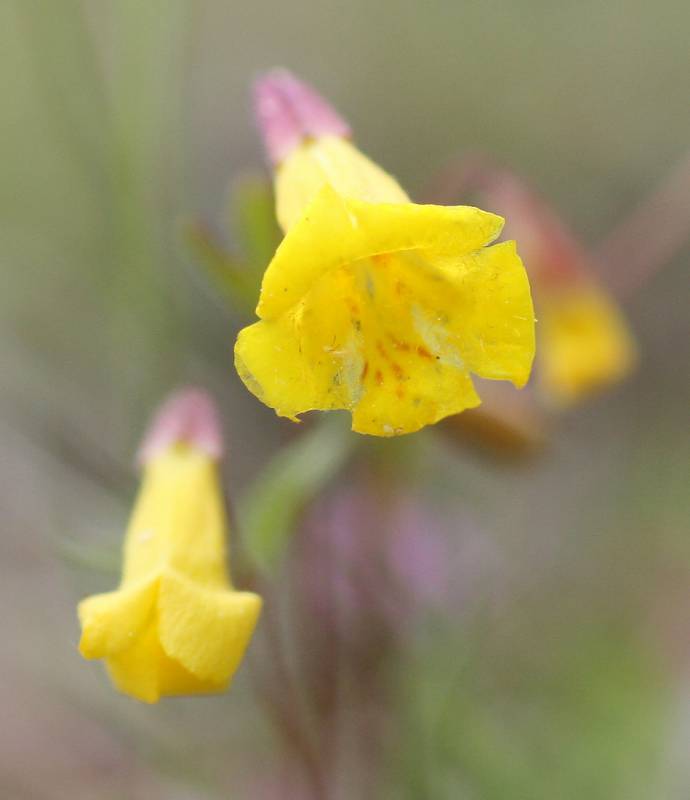Erythranthe primuloides
Erythranthe pulsiferae
primrose monkey-flower
candelabrum monkey-flower, Pulsifer's monkey-flower
Leaves opposite, crowded near the ground, short-hairy abaxially (underside), viscid to glabrous adaxially (upperside);
leaves oblanceolate, sessile, nearly entire, 3-nerved from the base, 7-25 mm. long and 3-11 mm. wide.
Leaves basal and cauline;
petioles 2-9 mm with 3 distinct veins and 2 wings;
blade elliptic-oblong to ovate or oblanceolate, 3-14 mm long and 2-9 mm broad, palmate venation with 3 veins, base cuneate to attenuate, margins finely toothed to entire, apex acute to obtuse, surfaces glandular-hairy as stems.
Flowers solitary on slender pedicels up to 10 cm. long arising from the leaf clusters;
calyx narrow, 4-8 mm. long, mostly glabrous, the 5 teeth short, equal;
corolla yellow, often dotted with maroon, 1-2 cm. long, scarcely bilabiate, the 5 lobes spreading, shallowly notched, the throat somewhat flaring;
stamens 4.
Axillary flowers 1-9, emerging from mid-stem to distal nodes; fruiting pedicels horizontally spreading-curved, 12-38 mm, glandular-hairy as stems;
calyx cylindric, somewhat inflated, 7-10 mm, margins toothed or lobed, glandular-hairy as stems, lobes pronounced, erect;
corollas yellow, tube-throat, palate ridges, lower limb yellow to light yellow, lower limb with red dots or not, symmetric bilaterally, barely bilabiate;
tube-throat funnel-shaped and 6-9 mm, protruding beyond calyx margin;
lobes widely obovate to somewhat orbicular, apex rounded;
styles glabrous;
anthers not protruding, glabrous.
Capsule.
Capsules 5-8 mm, included.
Erythranthe primuloides
Erythranthe pulsiferae
- Local floras:
CA,
OR,
WA
- Local Web sites:
CalFlora,
CalPhotos,
Flora NW,
PNW Herbaria
WildflowerSearch
iNaturalist (observations)
- LBJ Wildflower Center
- SEINet
- Plants of the World Online
- Encyclopedia of Life
- Wikipedia
- Google Image Search
- Local floras:
CA,
OR,
WA
- Local Web sites:
CalFlora,
CalPhotos,
Flora NW,
PNW Herbaria
WildflowerSearch
iNaturalist (observations)
- LBJ Wildflower Center
- SEINet
- Plants of the World Online
- Encyclopedia of Life
- Wikipedia
- Google Image Search



